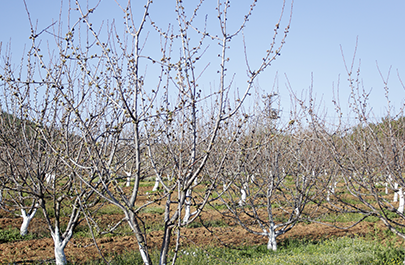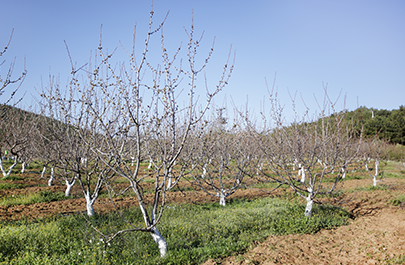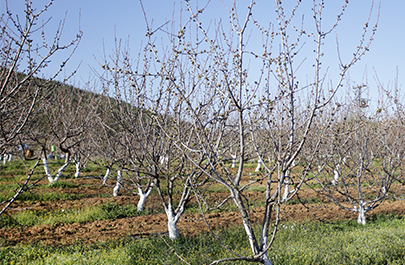






(Unit/t of production)
(Unit/t of production)
N
7
1.9
Very Sensitive
P2O5
3.5
0.5
Sensitive
K2O
6.5
3
Very Sensitive
CaO
4.9
0.2
Very Sensitive
MgO
1.5
0.1
Very Sensitive
TE
Boron (B) if required
The nutritional needs of cherry trees can be covered by four different methods of fertilization:
1. Topsoil fertilization
Granulated fertilizers are applied with the fertilizer spreader. The big advantage of this application technique is high performance per hectare and the technology is widely available.
2. Fertilization of the tree rows
Best suited for N fertilization in liquid form. The liquid fertilizer is dissolved in a tank and can be applied alongside herbicide using a targeted boom sprayer. The nutrients are more targeted to the plants when applied in this way.
3. Fertigation
Fertigation is the addition of fertilizer to the irrigation water with suitable equipment. Fertigation has the advantage that the nutrients are applied continuously and in a targeted manner. The increased use of drip irrigation systems in orchards has also increased the importance of fertigation.
4. Foliar fertilization
Foliar applications are suitable to compensate for deficiencies as quickly as possible. The roots cannot absorb all the required nutrients in the desired ratio (under special soil or weather conditions). At this time, one or more applications with foliar fertilizers make sense. Nutrients that miss the leaf can also be taken up from the soil.
Nitrogen fertilization

Calcium fertilization

Magnesium

Nitrogen fertilization is carried out in two to three doses after the start of the growth period, shortly before flowering until the end of June. The trees absorb the nitrogen mainly as nitrate. Nitrate (anion) can promote the uptake of cations such as calcium (Ca2+), magnesium (Mg2+) and potassium (K+). N-doses can be applied specifically to the tree rows and only occasionally in the tramlines. Growing grass between rows reduces the risk of nutrient leaching. If the N fertilizer is concentrated at the tree rows only, the concentration (N per area) should not exceed twice the concentration, which would be used at the total area. The total amount can be concentrated on the row if used together with P, K, and Mg. N can be applied very efficiently in liquid form (herbicide boom sprayer or via irrigation). Young trees are fertilized according to their stage of development.
Calcium is important for cell wall strength and supports stability and shelf life. Ca applications can reduce the bursting of the fruits. For reasons of better tolerance, two to three foliar applications of Ca to the juvenile fruits are recommended in addition to the basal fertilization.
Depending on growth and yield, the annual absorbtion of cherry trees amounts to approx. 30kg MgO/ha. The leaves take up the major part, but remain largely in the nutrient cycle. A favourable form of magnesium soil fertilization consists in the use of Mg-containing limestone in the course of a preservation liming.
LAT Nitrogen Austria GmbH
St.-Peter-Strasse 25
4021 Linz, Austria













